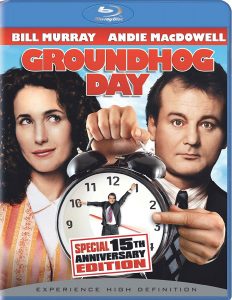“The Terror” was one of the most gripping series of 2018, a rare horror TV show that maintains a creepy aura even with the escape provided by commercial breaks. It’s slow-paced, and it doesn’t stick the landing, so it barely missed my end-of-year list. But I’m happy to return for “The Terror: Infamy” (Mondays on AMC).
A strange follow-up
This might be the strangest-ever case of a Season 2 being carved out of what was initially a miniseries. Season 1 is adapted from Dan Simmons’ novel that imagines the details of a historic journey by two ships – one named the Terror — in the mid-19th century to traverse the Northwest Passage.
“Infamy” has nothing to do with Simmons or the Northwest Passage or the Terror. Instead, it uses the common definition of “terror” and jumps ahead to the 1940s and FDR’s internment of Japan-born Americans in the wake of the Pearl Harbor attack. The production team is different, so AMC is essentially banking on name recognition.

“The Terror: Infamy” (Season 2, 2019)
Mondays, AMC
Creators: David Kajganich, Max Borenstein, Alexander Woo
Stars: Derek Mio, Christina Rodlo, Teach Grant
The moody style remains, though. An ancient Japanese spirit is terrorizing a California fishing village, mainly the Japanese-American population. The horror imagery is top-shelf, starting with a woman’s creative method of suicide. A stiff wind later blows her corpse out of her coffin, making the survivors and us viewers more unsettled. And the pilot episode’s final image ratchets the “What the heck is happening?” factor to another level of deliciousness.
I think Season 2 suffers a little from being such a well-known part of history. Granted, the World War II internment of Americans should be discussed and known to an even greater degree. Some people rate FDR among their favorite presidents, and that status should never be bestowed on someone who signed off on this. But Season 1 is fun largely because it opens up a historic event I knew nothing about.
“Infamy” is a history lesson, too, but it’s about the details of what these people experience, so we’ll understand in our bones the wrongness of it and perhaps compare it to today’s FEMA border camps. We feel the weight of the racist political reality – even in California, where Jackie Robinson was a collegiate star around this time. “Infamy” is politically charged, and it should be, but I’m not into that as much as the eye-opener of the Season 1 event. Admittedly, that’s a matter of taste.
Horror of history
In the main thread, college student Chester (Derek Mio) hooks up with Luz (Christina Rodlo), but they can’t take it further because of laws against interracial relationships. Chester’s father, Henry (Shingo Usami), features in the most eye-opening thread. His boss at the fishing docks, Grichuk (Teach Grant), gets Henry to flat-out give him his car, otherwise he’s going to tell the authorities Henry is a spy.

Chester believes they should’ve gone to the police about this blackmail, telling his father the authorities can be trusted in this enlightened age and country. That’s the central question: Does U.S. law truly protect these marginalized settlers, or are they merely words on paper?
When the internment camp buses roll by episode’s end, the answer is sadly clear. Our blood will boil in upcoming episodes when Japanese-Americans have to convince officials that they love their country even when their country is treating them like shit. What a horrible position to be in.
Balancing the horror of real history is the supernatural horror. Yuko (Kiki Sukezane), a tea server at a brothel, is a mesmerizing presence; she stars in that crazy final scene. Adding gravitas to the series are “Star Trek’s” George Takei as a wise old fisherman and “Teenage Mutant Ninja Turtles’ ” James Saito as one of the local patriarchs.
But overall, because this is a more familiar slice of history, “Infamy” is less mysterious and fascinating than Season 1. A viewer is less likely to get swept into the past, and more likely to be hit with all-too-contemporary issues – stuff that’s frightening in a different way.

